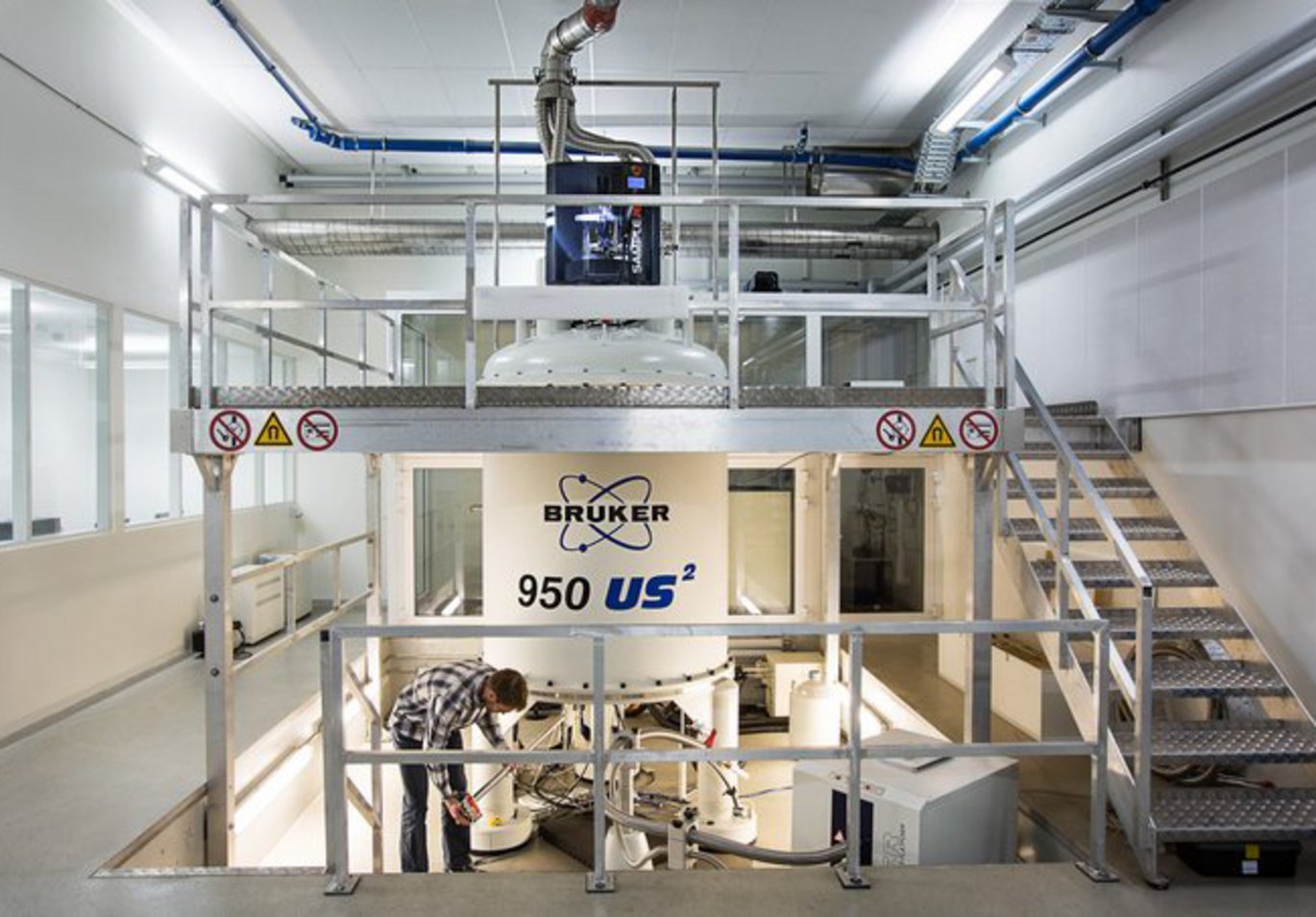Improving food quality at the atomic level
Can we improve food products with ingredients from, for example, seaweed and plant-based fats? An NMR spectrometer can help find answers to questions like these and many more - and at Aarhus University, you can find the largest of its kind in Northern Europe. Recently, researchers from all over the world gathered for a big NMR conference at Aarhus University to discuss the latest techniques.

Molecules can neither hide their structure nor their interaction with the environment.
Aarhus University has the largest NMR spectrometer in the Nordic countries. With a giant magnet it can reach a resonance frequency of 950 MHz - and it can give a very detailed picture of food - among other things. In fact, NMR is the most powerful technique when it comes to determining the structure of organic compositions.
This is knowledge that can be used to improve the quality of products in food companies, for example by increasing the nutritional value of foods, adjusting how they are processed, and by exploring new biofunctionalities and opportunities to utilize sidestreams. All for the benefit of consumers.
Since the very first NMR equipment was introduced at the Department of Food Science more than 20 years ago, everything from meat, potatoes, bread, fruit and cheese to the new plant-based products has been studied, and in the hands of researchers this has led to many exciting results and expertise in the field.
The university recently hosted a major international NMR conference, MRFOOD2022, where a number of the world's leading researchers had the opportunity to discuss the latest techniques and opportunities in the field. No less than 100 NMR enthusiasts from 19 countries were present at the conference, which was the 15th of its kind.
Hanne Christine Bertram, Professor at the Department of Food Science, has been at the forefront of bringing the conference to Aarhus and organizing it in collaboration with the interdisciplinary research center iNANO at Aarhus University:
- It is important to maintain the international network around NMR research, which exist in the food area, so that we can continue to inspire and learn from each other - and create results that can benefit the food quality. That's the whole point of MRFOOD, and after a three-year corona break, there was plenty to discuss at this year's conference.
New techniques for the food of the future
At the conference, eight invited keynote speakers presented new NMR techniques.
For example, Maria Victoria Gomez from the Universidad de Castilla-La Mancha talked about the development of new micro-coils that can increase the sensitivity of the technique - and thus provide a more nuanced understanding of the foods studied, while Andre Simpson from the University of Toronto talked about new pulse sequences that can be used when solid material and liquid appear in the same sample:
- These pulse sequences are able to separate signals that are on top of each other in an NMR spectrum and therefore prevent detection, and this means that we will in future be able to carry out studies that have not been possible so far, says Hanne Christine Bertram.
Poul Smeets from Wageningen University talked about how the imaging technique MRI can make it possible to monitor the digestive process directly:
- It is a technique that has given us crucial knowledge about the connections between food structure and appetite regulation, and this was discussed by Alan Mackie from the University of Leeds in a supplementary presentation, says Hanne Christine Bertram.
In total, there were 30 oral presentations and almost 40 poster presentations at the conference as well as two workshops, where the participants in one heard about an automated method of processing NMR spectra, and in the other got a detailed review of the theory behind what it is possible to measure using NMR.
The next MRFOOD conference is ecpected to take place in 2024.
Further information:
Hanne Christine Bertram, Professor, Department of Food Science, hannec.bertram@food.au.dk, phone: 61687389
The conference received funding from the Carlsberg Foundation and AUFF as well as Bruker, magritek, nanalysis, lff, AAK, foods and Oxford Instruments.
Read more about the conference on this website
